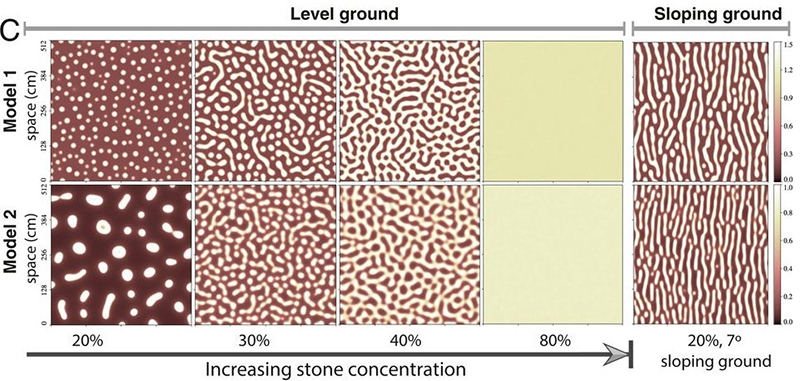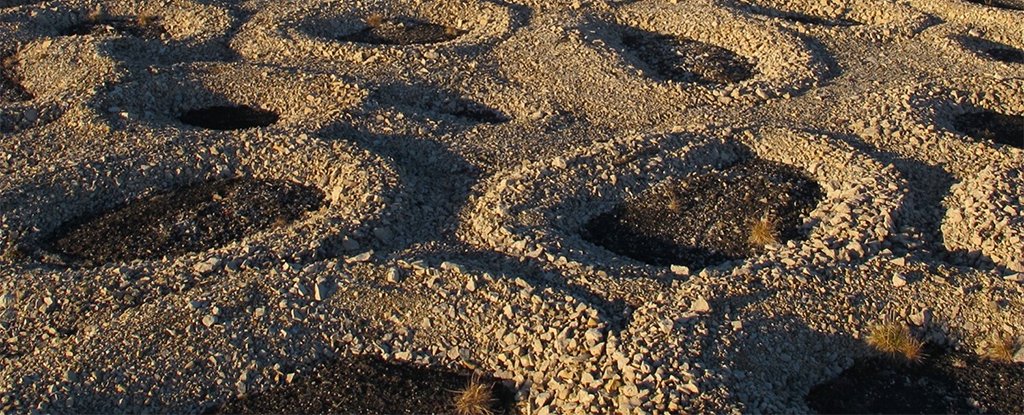Products You May Like
In rocky, frosty landscapes, specific patterns of stones can end up forming – it’s like human hands have formed them, but without any gardener being anywhere near them. A new study shows how these formations can be created with needle ice – spikes of ice that rise up from the earth and are formed with groundwater.
The researchers used a combination of lab experiments and computer models to show how needle ice can shift small rocks and soil particles into patterns, pushing them from underneath to slightly change their position.
Because needle ice is more likely to form and flourish on bare patches of ground, what stones are around are gradually consolidated into the areas around these patches – creating some spectacular patterns that can stretch for a significant distance across the landscape everywhere from Norway to Hawaii.
“That kind of selective growth involves interesting feedbacks between the size of the stones, the moisture in the soil, and the growth of the ice needles,” says geologist Bernard Hallet from the University of Washington.
This idea of needle ice producing patterns from stones goes back decades, but here the researchers used their own experiments to see how the formations actually came together and then developed a computer model that could simulate the same process.
The experimental setup was a flat square of wet soil a little over 1 foot (0.3 meters) in size, with stones placed evenly on its surface. Researchers then put the setup through 30 freeze-thaw cycles that represented the shifting temperatures of day and night.
As you can see from the resulting videos (including the one above), pattern formation can start happening pretty quickly, and within the 30 freeze-thaw cycles. The concentration of the stones, the slope of the ground, and the height of the ice needles all affect how the patterns formed.
“The videos are pretty striking, and they show that the ice just comes up and in a single cycle it pushes up stones and moves them slightly to the side,” says Hallet. “Because of those experiments and the abilities of the individuals involved to analyze those results, we have much more tangible, quantitative descriptions of these features.”
The researchers also tied their study in with models of phase separation – the concept of two distinct parts coming out of one can be useful in analyzing cell structure, gravitational fluids, ecological systems, and more.
This field of research goes beyond our own planet, too: Scientists are also working to analyze some of these patterns seen on the surface of Mars, which can reveal both what’s on the surface and what’s happening in the Martian environment.
 Two computer models predicting stone distribution based on initial concentration. (Li et al., PNAS 2021)
Two computer models predicting stone distribution based on initial concentration. (Li et al., PNAS 2021)
What’s more, because needle ice and the patterns it makes are so closely related to local temperatures, the team thinks that the shifting of rock formations over time could help us understand how the planet is responding to increasing temperatures.
“Our study highlights phase separation theory as a source of important insight into studying ground patterns in cold regions and their potential value in signaling important changes in ground conditions with the warming climate,” write the researchers in their published paper.
The research has been published in PNAS.
